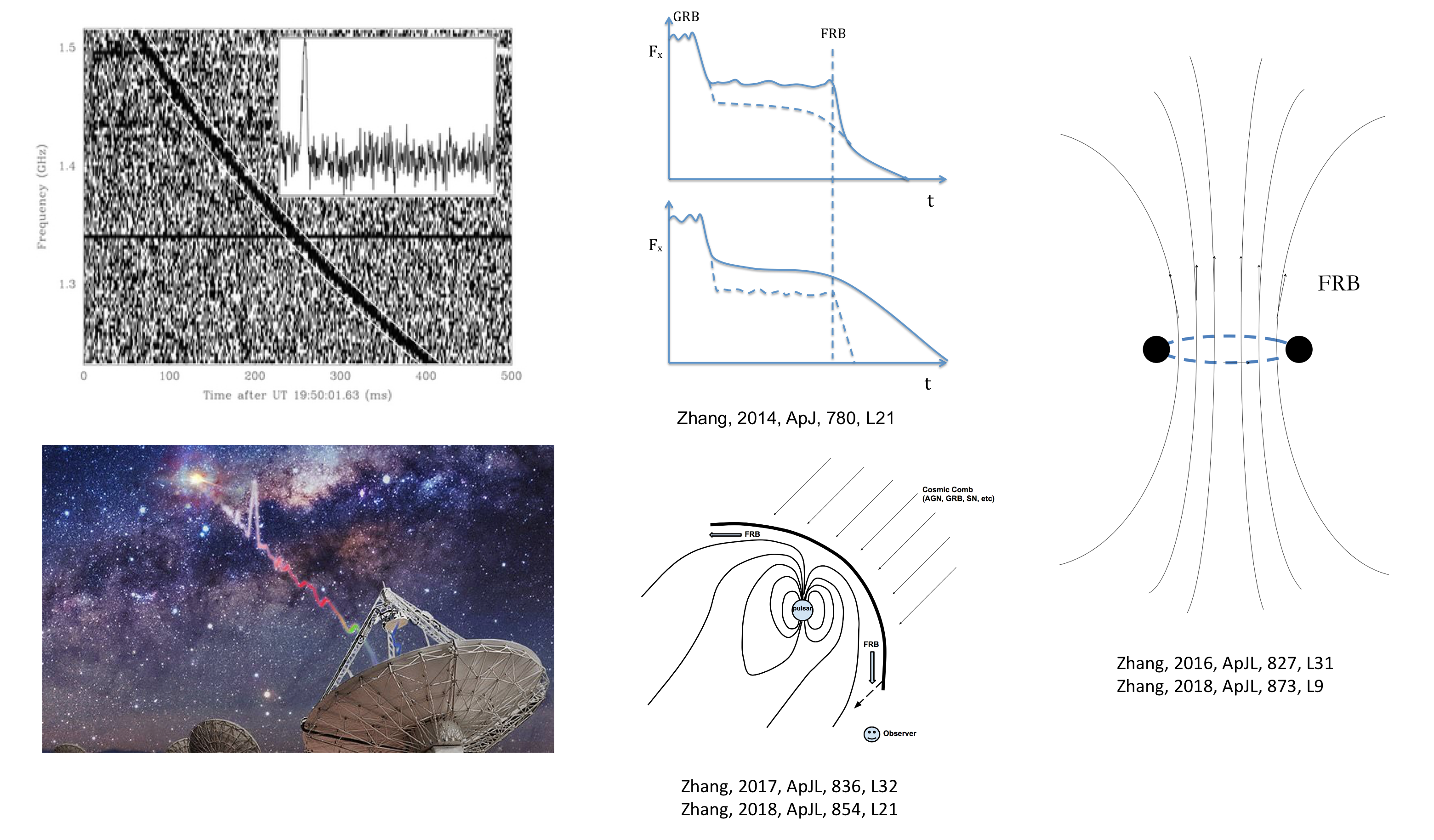Fast Radio Bursts
Fast Radio Bursts (FRBs) are mysterious radio bursts discovered in 2007. They are from cosmological distances and have the brightest radio emission (highest brightness temperature) in the universe. Their physical origin remains unknown. At least some of them repeat, but it is unknown whether there exist distinct repeating and non-repeating categories. Dozens of models have been proposed, but so far there is no smoking-gun signatures to settle down their physical origin(s). Regardless of their physical origin, these bursts are interesting cosmic beacons to probe the cosmic structure and fundamental physics. This is a very active field of study in astrophysics, and I am spending a significant amount of time conducting theoretical and observational research in this field.
The upper left panel is the first-ever FRB discovered by Duncan Lorimer and colleagues (the Lorimer burst); the lower left panel is an artist's impression of an FRB passing through the cosmos and being detected by radio telescopes on Earth. The rest three panels are three possible scenarios I have proposed to produce FRBs along with my five relevant ApJ Letters references.
Recently, in collaboration with my collaborators, I am using the Five-hundred-meter Spehrical Aperture radio Telescope (FAST) to study FRBs and made a few breakthrough discoveries that have been published in Nature.
Below are some of my papers related to FRB research:
* A review article
The physical mechanism of fast radio bursts published in Nature.
* An article
Diverse polarization angle swings from a repeating fast radio burst source, published in Nature.
* An article
No pulsed radio emission during a bursting phase of a Galactic magnetar published in Nature.
*
Nature reported the 2017 Winter FRB Conference we organized at Aspen Center for Physics.
